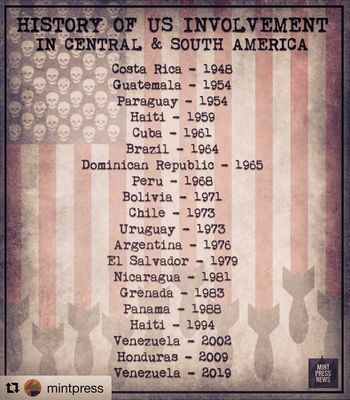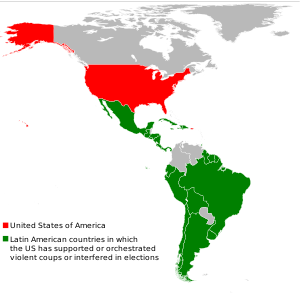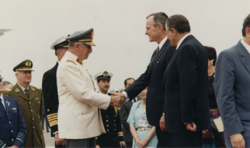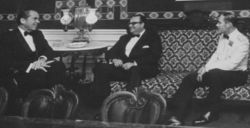تورط الولايات المتحدة في تغيير الأنظمة في أمريكا اللاتينية
The الولايات المتحدة involvement in regime change in Latin America was most prominent during the Cold War, in part due to the Truman Doctrine of fighting Communism, although some precedents exists especially during the early 20th century.
الأرجنتين
أوروگواي
پاراگواي
البرازيل
Brazil experienced several decades of right-wing authoritarian governments, especially after the US-backed[1] 1964 Brazilian coup d'état against center-left social democrat João Goulart promoted, according to then President John F. Kennedy, to "prevent Brazil from becoming another Cuba".[2] Brazil's return to democracy saw several consecutive right-wing neoliberal governments following the Washington Consensus ending in endemic inequality and extreme poverty, one of the worst in the Continent.[3]
پنما
پيرو
تشيلى
گواتيمالا
السلڤادور
ڤنزويلا
كوستاريكا
نيكاراگوا
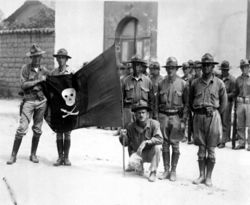
United States Marines with the captured flag of Augusto César Sandino in 1932
انظر أيضا
- American Empire
- Anti Americanism
- Foreign relations of the United States
- List of free trade agreements
- List of United States military bases
- Organization of American States
- United States and state terrorism
المراجع
- ^ Skidmore, Thomas. The Politics of Military Rule in Brazil, 1964-1985.
- ^ http://nsarchive.gwu.edu/nsa/2014%20Annual%20Report.pdf
- ^ "Introduction: Lula's Legacy in Brazil". Nacla. Retrieved 5 November 2017.
الكلمات الدالة:
This article contains content from Wikimedia licensed under CC BY-SA 4.0. Please comply with the license terms.
